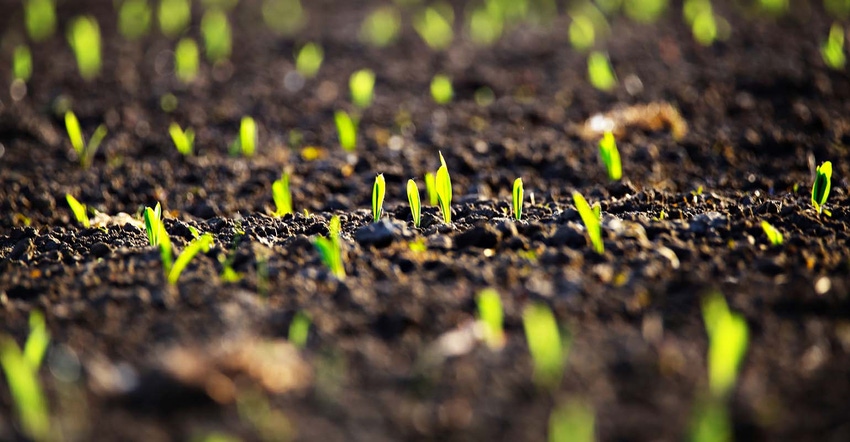
Volatility. It’s big.
Six dollar corn came and went for the May 2021 futures contract. Within two weeks, the price of May corn futures went from $6 to an astounding $7.20-1/2. Prices not seen since 2013!
As I wrote about two weeks ago, $6.00 was a major resistance point for old crop futures prices. At the time, it seemed a setback was likely for prices, unless fresh bullish news emerged.
That new bullish news did emerge; the second crop Safrhina corn in Brazil is suffering due to extreme heat and low precipitation.
In addition, cash basis in the U.S. continues to explode higher for the months of May through August, indicating to the world exactly how tight old crop supplies actually are in the U.S. Basis looks to stay strong until the crop (which is just starting to be planted now) is harvested in the fall.
Due to old crop supplies getting tighter, and demand staying strong, the outlook for corn prices remains solid heading into summer months. Here are 5 factors to watching during the month of May, which will be critical for corn prices.
Drought monitor index
The industry is well aware of the dry conditions throughout the western U.S. What is alarming is the drought increase in the Dakotas. North Dakota is the fifth largest producer of soybeans in the United States, and a large producer of corn, spring wheat (Minneapolis wheat) and canola. With the majority of that state in drought, and spreading quickly, the industry is on high alert for production issues. Comparing current the current drought monitor to this same time of year during 2012 (the big drought) is rather alarming.
Weekly planting progress
Every Monday afternoon at 3pm CST the USDA releases the weekly Crop Progress Report. This weekly recap shows exactly what percent of the nation’s crops have been planted weekly. On the recent report, 17% of the nation’s corn crop was planted. The only year faster than that, in the past ten years, was 2012, when the crop was 26% planted. I am mindful of the drought conditions as many sub soil levels are parched, tiles that would normally be running are still, and many producers are nervous of conditions to come.
Weekly export inspections
Corn and soybean exports are at 98% to 99% of expected sales on the books. Regarding grain that has actually left the country on a boat, soybeans are at 90% of USDA projections, and corn is at 60% of USDA projections, with plenty of time remaining in the marketing year to fulfill that total goal of 2.675 billion bushels exported for the 2020/21 crop marketing year. Trade will want to continue to see the strong weekly export inspections numbers. To see them means that the USDA will likely NOT reduce corn demand for export on upcoming USDA reports.
May 12 USDA WASDE report
Traditionally the May supply/demand report from the USDA report does not have a lot of exciting twists and turns to it. This year may prove to be different as the industry will be focused on ending stocks for the 2020/21 crop year. Ending stocks for corn are at a historically tight 1.352 billion bushels with a stocks to use ratio of 9.2%. My initial thought is that the USDA may likely may little changes to this report as aggressive changes were just made in the April 2021 report. Trade will quickly focus on weather instead.
Fund positions
The funds continue to hold a hefty long position in grain markets. And depending on fundamental news, they may only be getting started on the buy side now that they have the legal ability to own nearly double the amount of contracts in year prior. For example, in 2012, when $8 corn futures occurred, the funds were long over 400,000 contracts. On the most recent CFTC report, the funds were officially long 384,000 contracts, with corn futures at the time, just approaching $7 per bu. Imagine what prices might do if the funds took advantage of their newly expanded position potential!
Corn trade for the month of May will have plenty of twists and turns. Watching the planting progress here in the Unites States, along with weather in Brazil, and demand will keep the market volatile.
Reach Naomi Blohm: 800-334-9779 Twitter: @naomiblohm and [email protected]
Disclaimer: The data contained herein is believed to be drawn from reliable sources but cannot be guaranteed. Individuals acting on this information are responsible for their own actions. Commodity trading may not be suitable for all recipients of this report. Futures and options trading involve significant risk of loss and may not be suitable for everyone. Therefore, carefully consider whether such trading is suitable for you in light of your financial condition. No representation is being made that scenario planning, strategy or discipline will guarantee success or profits. Any decisions you may make to buy, sell or hold a futures or options position on such research are entirely your own and not in any way deemed to be endorsed by or attributed to Total Farm Marketing. Total Farm Marketing and TFM refer to Stewart-Peterson Group Inc., Stewart-Peterson Inc., and SP Risk Services LLC. Stewart-Peterson Group Inc. is registered with the Commodity Futures Trading Commission (CFTC) as an introducing broker and is a member of National Futures Association. SP Risk Services, LLC is an insurance agency and an equal opportunity provider. Stewart-Peterson Inc. is a publishing company. A customer may have relationships with all three companies. SP Risk Services LLC and Stewart-Peterson Inc. are wholly owned by Stewart-Peterson Group Inc. unless otherwise noted, services referenced are services of Stewart-Peterson Group Inc. Presented for solicitation
The opinions of the author are not necessarily those of Farm Futures or Farm Progress.
About the Author(s)
You May Also Like






